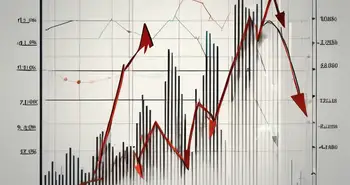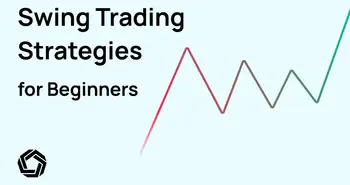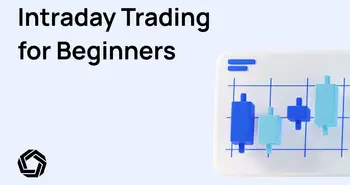The Practical Guide to Swing Trading Stocks

As an experienced swing trader, I know that navigating the world of stocks can be exhilarating and daunting at the same time. That's why I've created this ultimate guide to swing trading stocks – to equip you with the knowledge and tools you need to succeed in this dynamic market. Whether you're a beginner looking to get started or a seasoned trader looking to fine-tune your skills, this guide will take you through the essentials, the strategies, and the advanced techniques of swing trading stocks. So, let's dive right in!
Understanding the Basics of Swing Trading
Before we dive into the specifics, let's clarify what swing trading actually is. In a nutshell, swing trading is a strategy where traders aim to capture short-term price movements in stocks. Unlike long-term investors who hold stocks for months or even years, swing traders typically hold stocks for days or weeks. This approach allows for potentially quicker profits and the ability to take advantage of short-term market trends.
To successfully swing trade, you need to grasp the principles that underpin this strategy. One key principle is capturing “swings” – the price movements that occur within a larger trend. By identifying these swings, you can time your trades to enter when the stock is on an upswing and exit when it begins to decline. This requires a keen eye for technical analysis and an understanding of chart patterns and indicators.
Swing trading offers numerous benefits, such as the potential for higher returns compared to traditional long-term investing. However, it's important to be aware of the risks involved. The short-term nature of swing trading means you're exposed to more volatility and market noise. Plus, the rapid pace of decision-making can be mentally and emotionally challenging. Nevertheless, armed with the right tools and strategy, swing trading can be a lucrative endeavor.
One of the key advantages of swing trading is the flexibility it offers to traders. Unlike day trading, which requires constant monitoring of positions throughout the trading day, swing trading allows for more relaxed decision-making. Traders can analyze the market in the evening, set their trades for the next day, and then go about their day without constantly watching the markets. This flexibility is particularly appealing to those with full-time jobs or other commitments.
Another important aspect of successful swing trading is risk management. Given the short-term nature of swing trades, it's crucial to have a solid risk management strategy in place. This includes setting stop-loss orders to limit potential losses and sticking to a predetermined trading plan. Emotions can run high in the fast-paced world of swing trading, so having a disciplined approach to risk management is essential for long-term success.
Essential Tools for Swing Trading
To thrive as a swing trader, you need to equip yourself with the right tools. Technical analysis is a crucial aspect of swing trading, as it involves studying historical price data to predict future price movements. Chart patterns and indicators are indispensable tools in your arsenal. Chart patterns, such as support and resistance levels, trend lines, and candlestick patterns, help you identify potential entry and exit points. Meanwhile, indicators like moving averages and oscillators provide additional confirmation for your trading decisions.
Another essential tool for swing trading is a reliable trading platform. Choose a platform that offers real-time data, advanced charting capabilities, and order execution tools. Additionally, consider utilizing trading software that can automate certain aspects of your strategy, such as scanning for stock opportunities or setting stop-loss orders. These tools can greatly enhance your efficiency and accuracy as a swing trader.
Moreover, risk management tools are vital for successful swing trading. Implementing proper risk management techniques, such as setting risk-reward ratios and position sizing rules, can help protect your capital and minimize potential losses. Utilize tools like trailing stops to lock in profits and limit downside risk. By incorporating risk management tools into your trading strategy, you can safeguard your portfolio against unexpected market movements and maintain a disciplined approach to trading.
Furthermore, staying informed about market news and economic events is crucial for making informed trading decisions. Utilize tools like economic calendars and news feeds to stay up-to-date with relevant information that could impact the financial markets. Understanding the broader market context can help you anticipate potential price movements and adjust your trading strategy accordingly. By staying informed and utilizing the right tools, you can increase your chances of success as a swing trader.
Developing a Swing Trading Strategy
Having the right tools is just the beginning – you also need a well-defined strategy to guide your swing trading endeavors. A crucial step in developing your strategy is identifying tradeable stocks. Look for stocks that exhibit strong trends, ample liquidity, and volatility. Stocks with a history of forming clear and reliable chart patterns are particularly suitable for swing trading.
When it comes to identifying tradeable stocks, it's essential to conduct thorough research and analysis. Dive deep into the company's financial health, industry trends, and overall market conditions. Understanding the broader economic landscape can provide valuable insights into potential stock movements. Consider using fundamental analysis techniques alongside technical analysis to make well-informed decisions.
Timing is everything in swing trading. Perfectly executing trades at the right time can make all the difference. To improve your timing, utilize technical indicators and chart patterns to confirm potential entry and exit points. Additionally, pay attention to market sentiment, news events, and earnings reports that can impact the stock's price. Keep in mind that effective timing requires constant monitoring and adaptability as market conditions evolve.
Successful swing trading also involves having a clear exit strategy. While much emphasis is placed on entry points, knowing when to exit a trade is equally important. Consider setting profit targets based on support and resistance levels or using trailing stop orders to lock in gains as the stock price moves in your favor. Having a well-defined exit plan can help you maximize profits and minimize losses.
Finally, risk management is a fundamental component of any successful swing trading strategy. Set a predetermined risk-reward ratio to ensure that your potential gains outweigh your potential losses. Utilize stop-loss orders to protect against significant market downturns and take-profit orders to secure profits when the price moves in your favor. Consistently adhering to your risk management plan will help preserve capital and minimize emotional decision-making.
Advanced Swing Trading Techniques
If you've mastered the basics and want to take your swing trading to the next level, consider exploring advanced techniques such as short selling, using options, and sector rotation.
Short selling involves betting against a stock's price by borrowing shares from a broker and selling them, with the aim of buying them back at a lower price to profit from the price decline. While short selling can be risky and requires careful risk management, it can also provide opportunities to profit in falling markets.
Options trading offers even more flexibility in swing trading. By utilizing options contracts, you can profit from price movements, volatility, and time decay. Options can act as a hedge or provide leverage to amplify your gains. However, as options are complex financial instruments, thorough understanding and careful consideration of associated risks are crucial.
Another advanced technique to consider is sector rotation. This strategy involves identifying sectors or industries that are poised for growth and focusing on stocks within those sectors. By capitalizing on broader market trends and sector-specific catalysts, you can potentially enhance your swing trading profits.
Furthermore, within the realm of short selling, it's important to note that this strategy can be subject to short squeezes. A short squeeze occurs when a heavily shorted stock experiences a rapid price increase, forcing short sellers to cover their positions by buying back shares at a higher price, further fueling the upward momentum. Traders employing short selling must be vigilant of market dynamics and potential short squeeze scenarios to mitigate risks.
When delving into options trading, traders may encounter various strategies such as straddles, strangles, and spreads. These strategies involve combinations of buying and selling options contracts to capitalize on specific market conditions or expectations. For instance, a straddle involves purchasing both a call and a put option on the same stock with the same expiration date, anticipating a significant price movement in either direction. Understanding the nuances of these options strategies can provide traders with additional tools to navigate dynamic market environments.
Frequently Asked Questions (FAQ)
What is swing trading?
Swing trading is a strategy where traders aim to capture short-term price movements in stocks. It involves holding stocks for days or weeks to take advantage of short-term market trends.
What are the benefits of swing trading?
Swing trading offers the potential for higher returns compared to traditional long-term investing. It provides opportunities for quicker profits and the ability to adapt to rapidly changing market conditions.
How can I improve my swing trading timing?
Utilize technical indicators, chart patterns, and market analysis to identify potential entry and exit points. Stay updated on market sentiment, news events, and earnings reports that can impact the stock's price.
What are some advanced swing trading techniques?
Advanced swing trading techniques include short selling, using options contracts, and sector rotation. These techniques offer additional ways to profit and enhance your swing trading strategy.
What is risk management in swing trading?
Risk management involves setting a predetermined risk-reward ratio, utilizing stop-loss orders, and consistently adhering to your plan. It helps preserve capital, minimize emotional decision-making, and protect against significant market downturns.
Swing trading stocks can be a thrilling and rewarding endeavor. By understanding the basics, equipping yourself with essential tools, developing a solid strategy, and exploring advanced techniques, you can gain an edge in the market. Remember to continuously educate yourself, adapt to market conditions, and practice disciplined risk management. With patience, persistence, and a well-crafted plan, you can become a successful swing trader. Happy trading!
Ready to elevate your swing trading journey with a cutting-edge platform? Look no further than Morpher, the revolutionary trading platform that's transforming investing through blockchain technology. With Morpher, you can enjoy zero fees, infinite liquidity, and the ability to engage in fractional investing and short selling across a diverse range of markets. Experience the safety and control of the Morpher Wallet, amplify your trades with up to 10x leverage, and navigate the financial markets like never before. Sign Up and Get Your Free Sign Up Bonus today to start trading on a platform that's as dynamic and innovative as your swing trading strategy. Happy trading with Morpher!

Disclaimer: All investments involve risk, and the past performance of a security, industry, sector, market, financial product, trading strategy, or individual’s trading does not guarantee future results or returns. Investors are fully responsible for any investment decisions they make. Such decisions should be based solely on an evaluation of their financial circumstances, investment objectives, risk tolerance, and liquidity needs. This post does not constitute investment advice.

Painless trading for everyone
Hundreds of markets all in one place - Apple, Bitcoin, Gold, Watches, NFTs, Sneakers and so much more.

Painless trading for everyone
Hundreds of markets all in one place - Apple, Bitcoin, Gold, Watches, NFTs, Sneakers and so much more.









